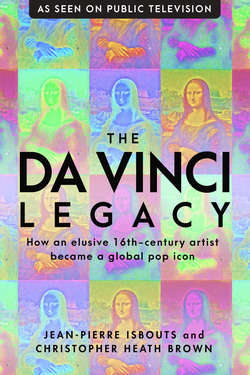Читать книгу The da Vinci Legacy - Jean-Pierre Isbouts - Страница 17
На сайте Литреса книга снята с продажи.
Leonardo’s Second Milanese Studio
ОглавлениеDeeply disappointed by the result of his labors, Leonardo once again set his sights on Milan, the city of his erstwhile glory. A perfect pretext presented itself: he and his Milanese collaborator, Ambrogio de Predis, were still owed payments for their work on the second version of the Virgin of the Rocks, which de Predis had delivered to the Confraternity of the Immaculate Conception in 1502. Frustrated in his attempt to recover the final payment, de Predis had lodged a complaint with the new ruler of Milan—who, as it happened, was the king of France, Louis XII. Louis then ordered a judicial hearing, which surprisingly went against the artists: the Confraternity claimed that the painting was still “unfinished.” Translated properly, this meant that the Confraternity believed the painting was more Ambrogio than Leonardo; the magic touch of the real master, they seemed to believe, was clearly missing. Perhaps the judgment was motivated by other factors. As it happened, Louis XII had become deeply fascinated by Leonardo. When he saw the fresco of the Last Supper in the Santa Maria delle Grazie, he ordered his engineers to “carry it into his kingdom . . . safely, and without any regards for expense,” as Vasari reports.
Leonardo da Vinci, Virgin of the Rocks, 1506–1508 (London version)
Leonardo da Vinci, Last Supper, 1494–1499
When his engineers told him that it was impossible to transport a large wall across the Alps, the king opted for the next best thing: a full-size copy of the Last Supper, to be executed by Leonardo and his workshop.19
The upshot of these developments was that Leonardo was able to reconstitute his studio in Milan, this time under the generous patronage of a royal commission.20 But by this time, the character of the studio had changed. During the six previous years, Leonardo’s associates had been busy absorbing the influence of other painters—blending the Leonardesque with the most recent movements in Italian art. As a result, the reconstituted studio of 1506 brought together a far more experienced and diverse group of artists. In addition to the original core, the bottega was now joined by a Florentine artist named Giovanni Francesco Rustici, who like Leonardo had been trained in Verrocchio’s workshop; a Sienese painter named Giovanni Antonio Bazzi, who also went by the less-than-flattering name of “Il Sodoma,” and whose loose morals became the subject of withering critique in Vasari’s Lives of the Artists; and an artist called Giovanni Pietro Rizzoli, commonly referred to as “Giampietrino” (a contraction of “Giovanni” and Pietro”), pronounced “Giampèder” in the Lombard dialect.
In addition, the studio was joined by Francesco Melzi, an artist of not inconsiderable talent who eventually became Leonardo’s loyal secretary and assistant until his death.
Giampietrino, Virgin of the Rocks (Cheramy version) after Leonardo, ca. 1500–1505
The most important work of this period was, of course, the life-size copy of the Last Supper on canvas. Given the speed with which this work was completed—it was delivered by Leonardo’s pupil Andrea Solario to the Château de Gaillon in France in 1509—the painting must have been a collaborative effort that involved not only Solario but also Boltraffio and Giampietrino, for reasons that we will see shortly. Leonardo himself supervised the work and, we believe, personally executed the faces of Jesus and John. X-ray examinations of this canvas, which has been quietly on display in the Tongerlo Abbey in Belgium for the last 450 years, indicate that in contrast to all the other figures, there are no underdrawings under the features of these two figures. Leonardo must have painted them directly onto the canvas. Furthermore, the face of John bears a remarkable similarity to the model Leonardo used for his drawing of Leda and the Swan, a project that was also coming to fruition at this time.
